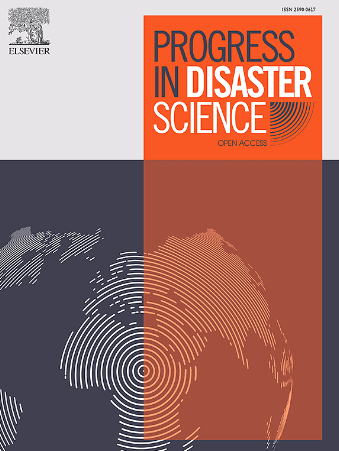改进大坝溃坝导致的生命损失估算模型,并为北美定制
IF 3.8
Q3 ENVIRONMENTAL SCIENCES
引用次数: 0
摘要
大坝溃坝造成的潜在生命损失是大坝安全和灾害管理中的一个重要问题。准确估计LOL对于知情决策、应急准备和在此类事件中尽量减少人员伤亡至关重要。本文提出了一个与大坝溃坝相关的LOL估算改进模型,并展示了如何将其定制到特定地区,以北美为例。该方法根据洪水的严重程度和与大坝的距离将大坝溃坝分类为子案例。以北美32个溃坝子例为例,通过多元回归分析,导出了两个作为LOL计算方法的经验方程。将数据集分为训练集和测试集,在测试集上,低严重情况的R2值为0.9949,中高严重情况的R2值为0.9955。选择Graham的模型作为比较基准,因为其应用简单,在LOL估计中已建立使用,并且数据需求最小。该模型的成功实施表明,它可能适用于不同地区,有助于改善灾害准备和响应策略,并提高大坝安全和大坝下游社区的福祉。本文章由计算机程序翻译,如有差异,请以英文原文为准。
Improving an estimation model for dam failure-induced loss of life and customizing it for North America
The potential loss of life (LOL) resulting from dam failures represents a critical concern in dam safety and disaster management. Accurate estimation of LOL is paramount for informed decision-making, emergency preparedness, and the minimization of human casualties in such events. This paper proposes an improved model for LOL estimation associated with dam failures and shows how to customize it to specific regions, exemplifying with North America. The approach categorizes dam failure into subcases based on flood severity and the distance from the dam. Two empirical equations that serve as the calculation method for LOL formulated through multivariate regression analysis are derived using thirty-two dam failure subcases in North America. The datasets were split into train and test sets, yielding R2 values of 0.9949 for low severity cases and 0.9955 for medium-high severity cases on the test sets. Graham's model was selected as a comparison benchmark due to its straightforward application, established use in LOL estimation, and minimal data requirements. The successful implementation of this model suggests its potential applicability for diverse regions, contributing to improved disaster preparedness and response strategies, as well as enhancing dam safety and community well-being downstream of dams.
求助全文
通过发布文献求助,成功后即可免费获取论文全文。
去求助
来源期刊

Progress in Disaster Science
Social Sciences-Safety Research
CiteScore
14.60
自引率
3.20%
发文量
51
审稿时长
12 weeks
期刊介绍:
Progress in Disaster Science is a Gold Open Access journal focusing on integrating research and policy in disaster research, and publishes original research papers and invited viewpoint articles on disaster risk reduction; response; emergency management and recovery.
A key part of the Journal's Publication output will see key experts invited to assess and comment on the current trends in disaster research, as well as highlight key papers.
 求助内容:
求助内容: 应助结果提醒方式:
应助结果提醒方式:


